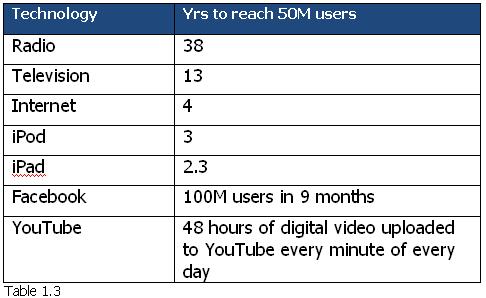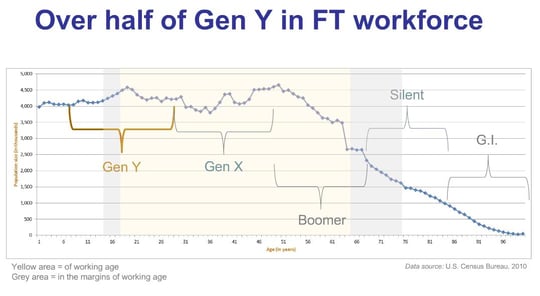Published on
The Age Of Knowledge Workers

The post WWII “baby boomers” cohort were the first to drive our manufacturing economic engine and the first to enter the “Information Age” as executive managers. By then we had formed strong opinions about what constituted formal education, management structure and labor policy. Hence, we accepted the boundaries of a blue collar and white collar workforces. As information technology expanded and the resulting increase in accumulation of stored knowledge, a new means of educating workers using these new technologies became obvious and necessary.
Of course the basis of using these mostly labor saving technologies was to lower cost and suggest that human intellectual capital was too valuable for mundane or heavy labor that could be automated. That should have been a clear signal to put increasingly more emphasis on math and science skills in our formal education if anyone did actuarial math on cohort pools going forward. Some institution did while many others expand money making sports programs. No one could have predicted the compressed cycles of product development and advancements in software development as we now know. These cycle continue to compress and we are creating masses of new digital data daily – faster than we can comprehend or use it.
While new software tools to aggregate useful data are coming to market, the means to manage, store and visualize “Big Data Warehouses” is lagging the ability to use it and users to learn fast enough how to use it. These challenges become exponential by the day. Increasingly the skilled labor force profile of Gen Y doesn’t see much value in meeting the challenge half way. The desire is for the genius of Silicone Valley will figure it out. These are the very folks who are consuming all of the skilled computational workers with fewer “jerk” managers – by their own definition – and reinventing the talent management work force structure away from the still popular post WWII versions.
What one can extrapolate from this phenomenon is that the growing population of Gen Y tech savvy gamers coming into the workforce (see the table below) want the same kind of search, find and utilize tools in their job as they regularly use in their social network activities on Smartphones and iPads.
“Most informed persons are aware that the way we do business is changing fast. To keep up, our entire view about work has to change just as fast. Unfortunately, most people aren’t adapting fast enough to this change in the workplace,” says marketing guru Seth Godin.
According to the founder of Squidoo.com and author of 13 books, “The current recession is a forever recession, because it’s the end of the industrial age, which also means the end of the average worker.” This would account for a recession recovery with plenty of jobs that fewer are qualified to fill.
“For 80 years, you got a job, you did what you were told and you retired,” says the former vice president of direct marketing at Yahoo! “People are raised on this idea that if they pay their taxes and do what they’re told, there’s some kind of safety net, or pension plan that’s waiting for them. But the days when people were able to get above average pay for average work may be over. If you’re the average person doing average work, there’s going to be someone else out there doing the exact same thing as you, but cheaper. Now that the industrial economy is over, you should forget about doing things just because it’s assigned to you.”
However, “if you’re different and determined you can find ways to differentiate yourself or repurpose your skills to made yourself unique, people will find you and pay you your marketable value,” Godin says.
Instead of waiting around for someone to tell you that you matter, take your career into your own hands. In other words, don’t wait for someone else to pick you, you pick yourself!
Author Perspective: Business





